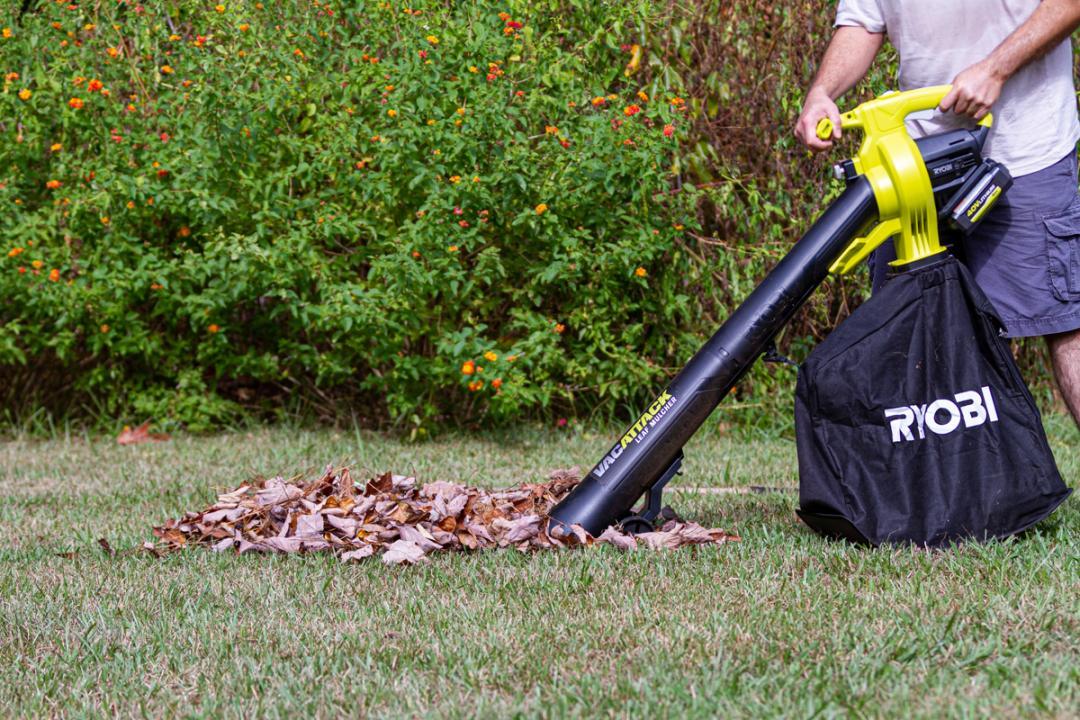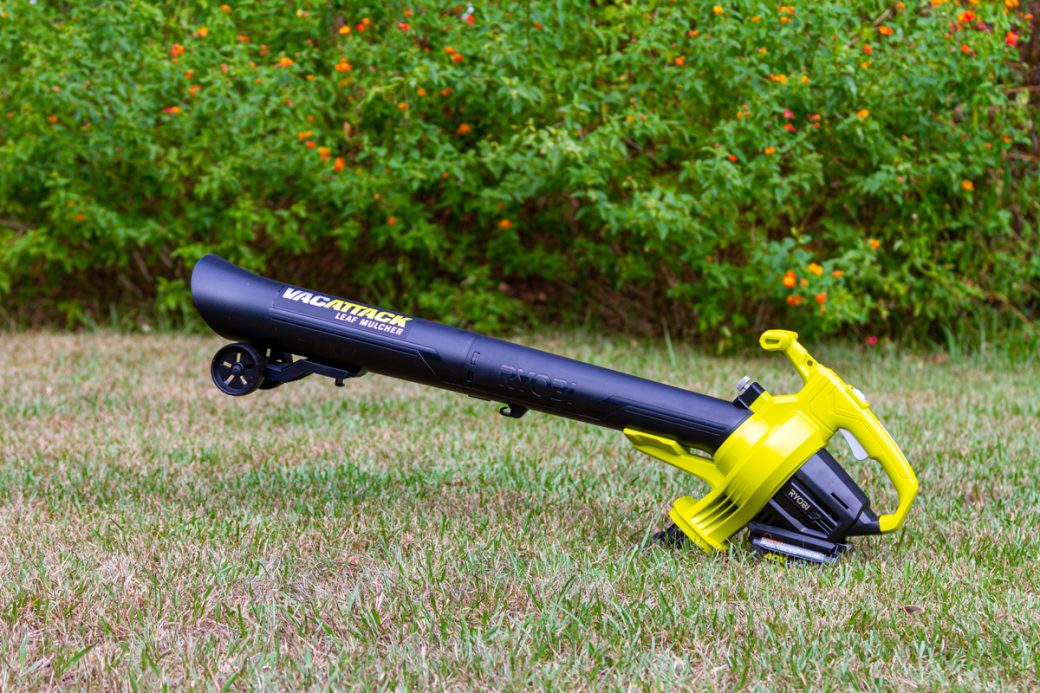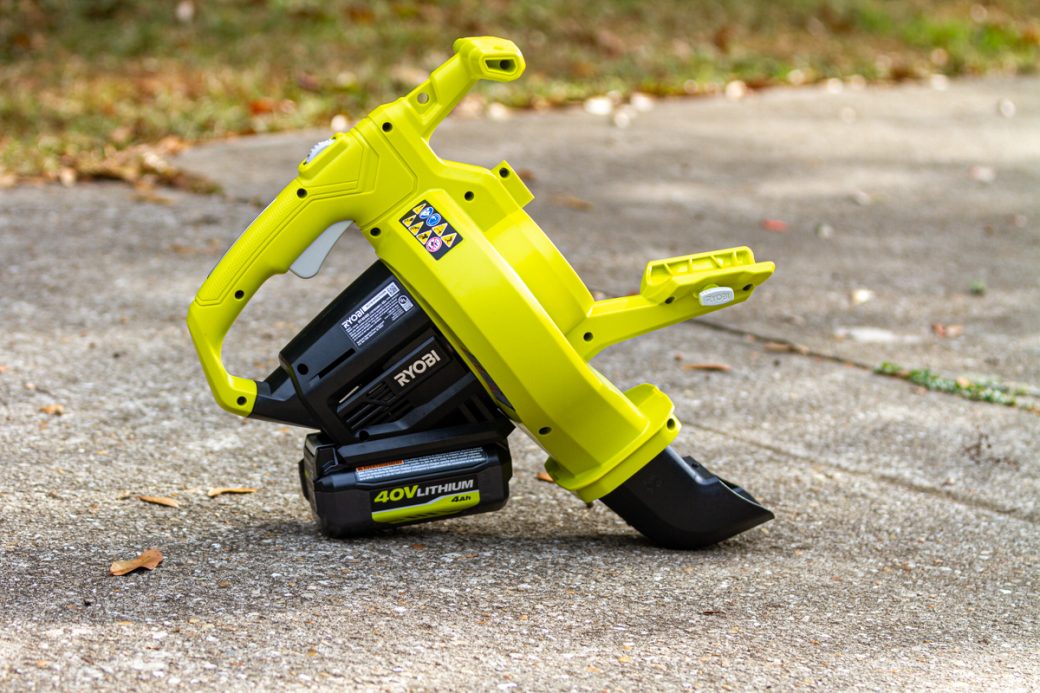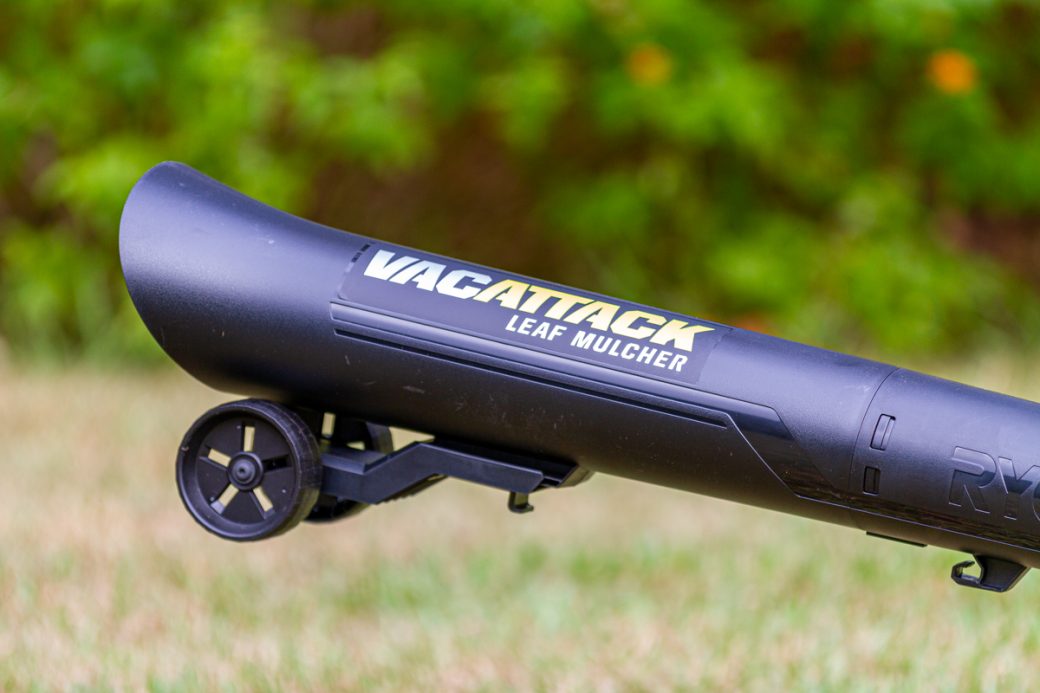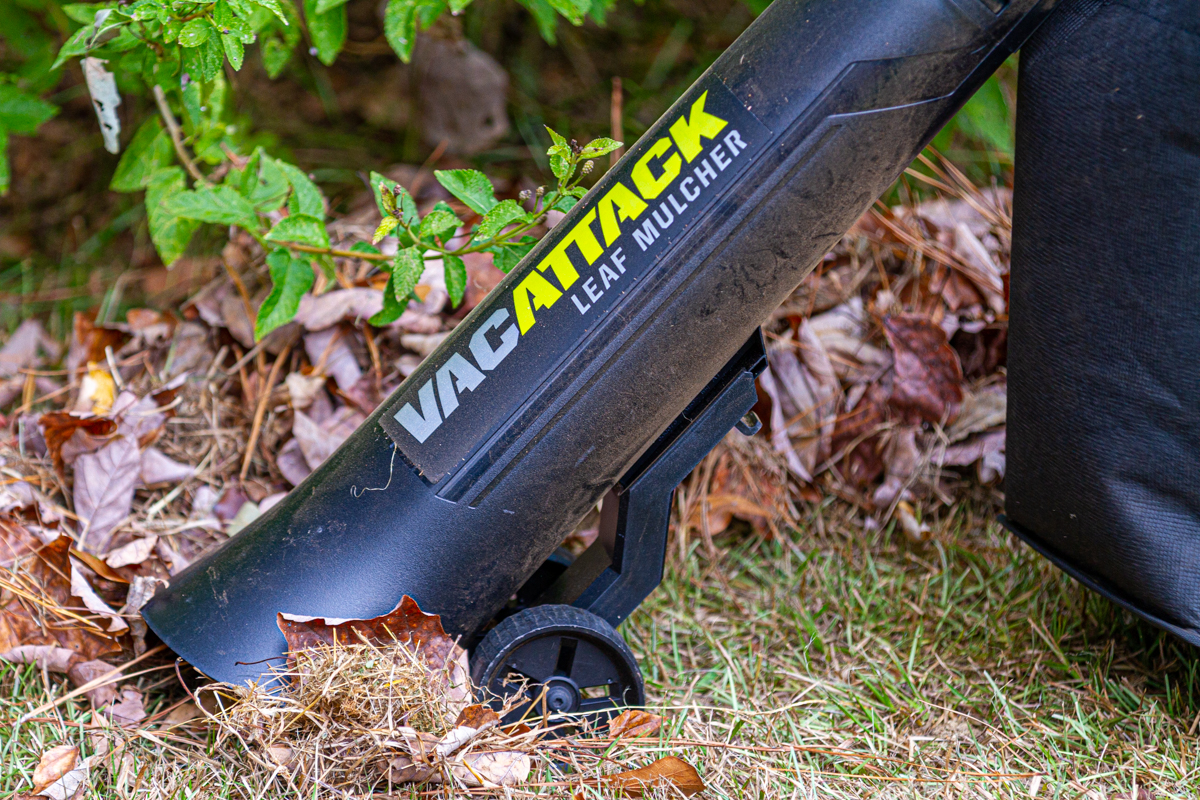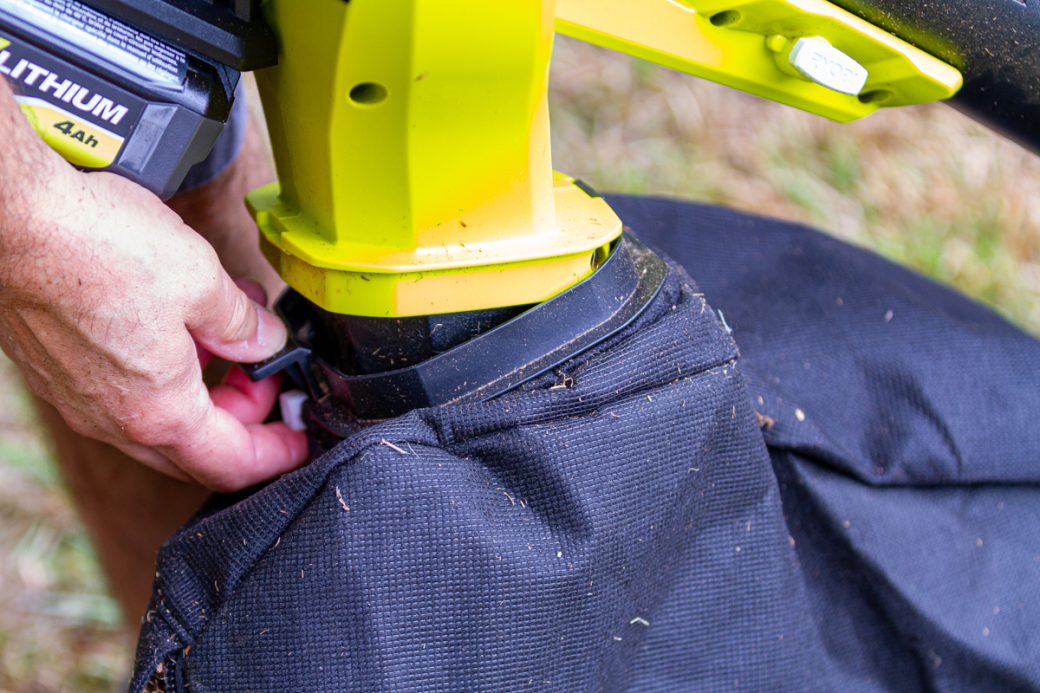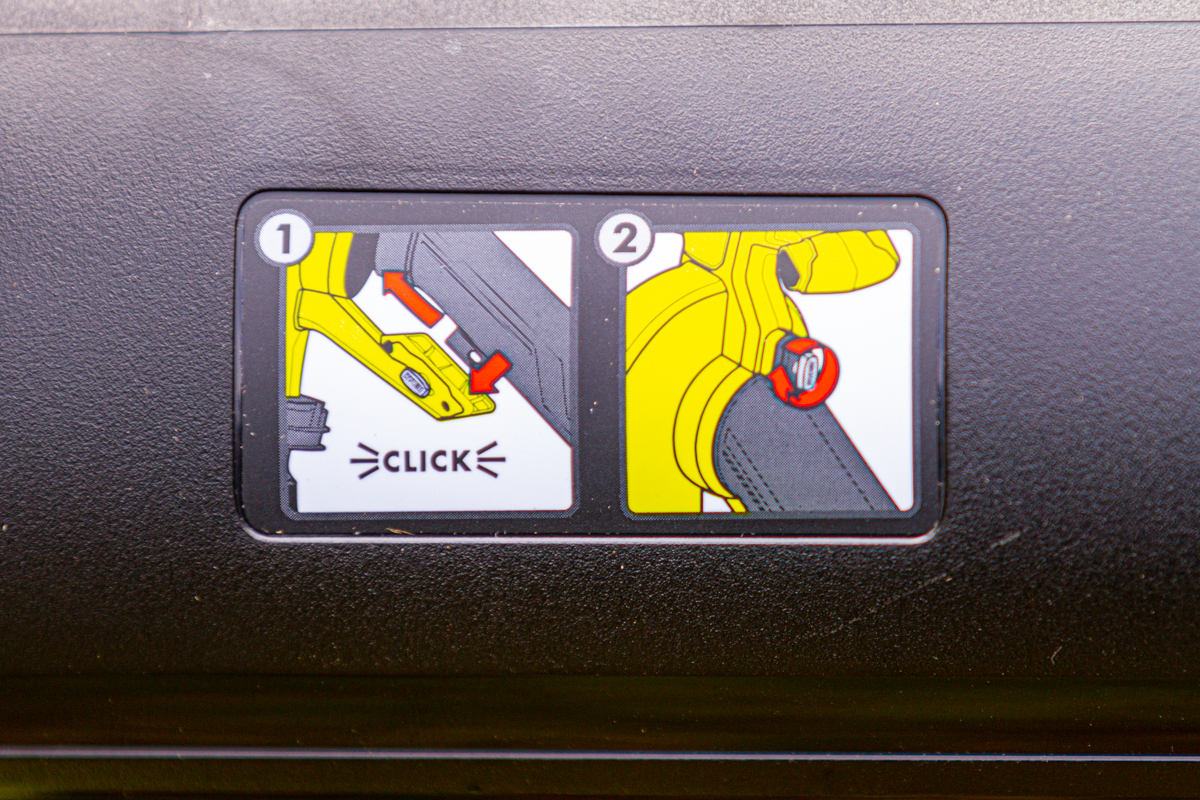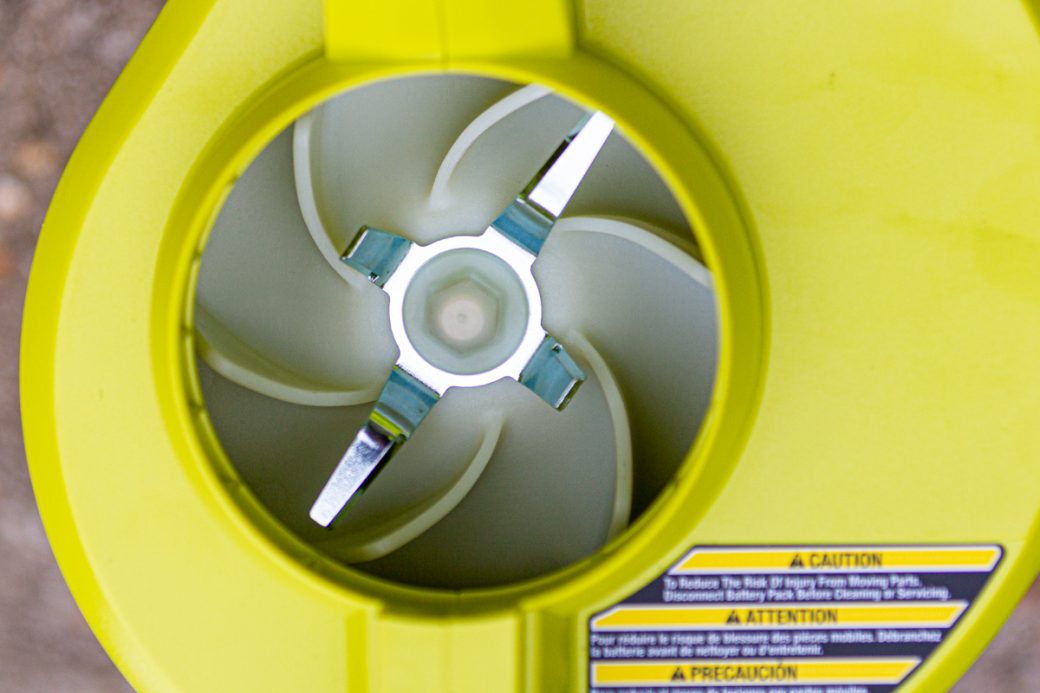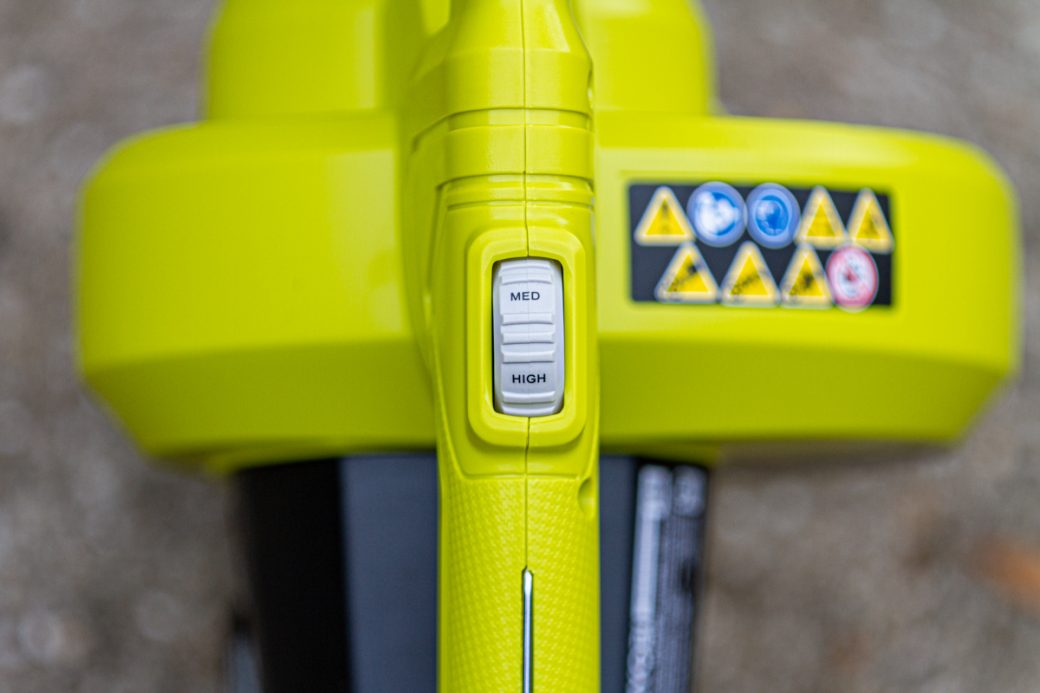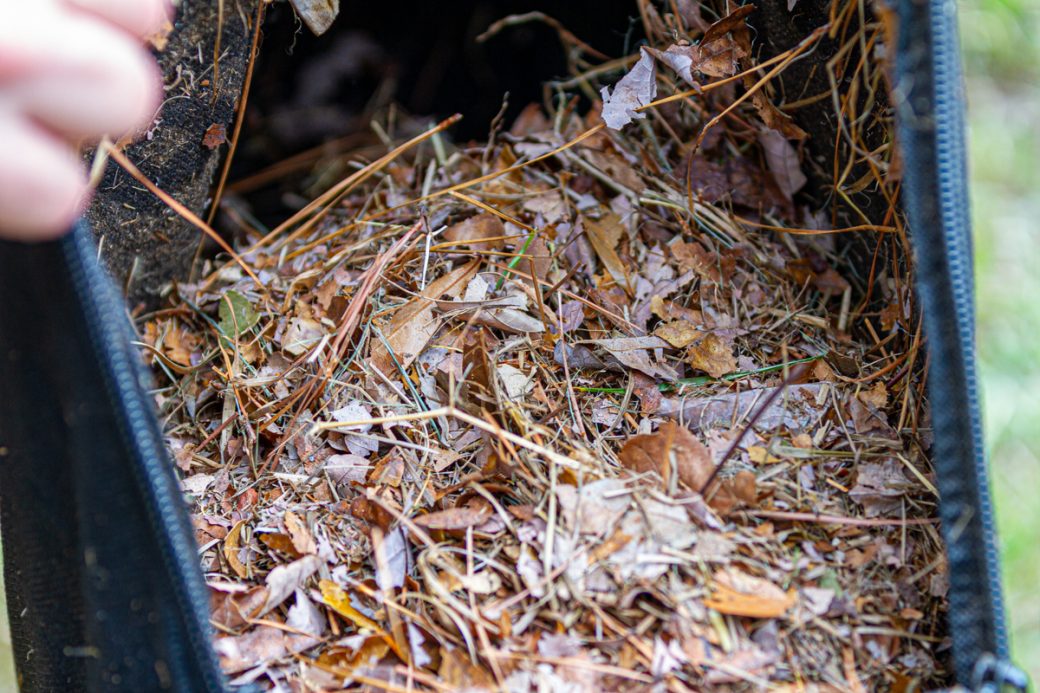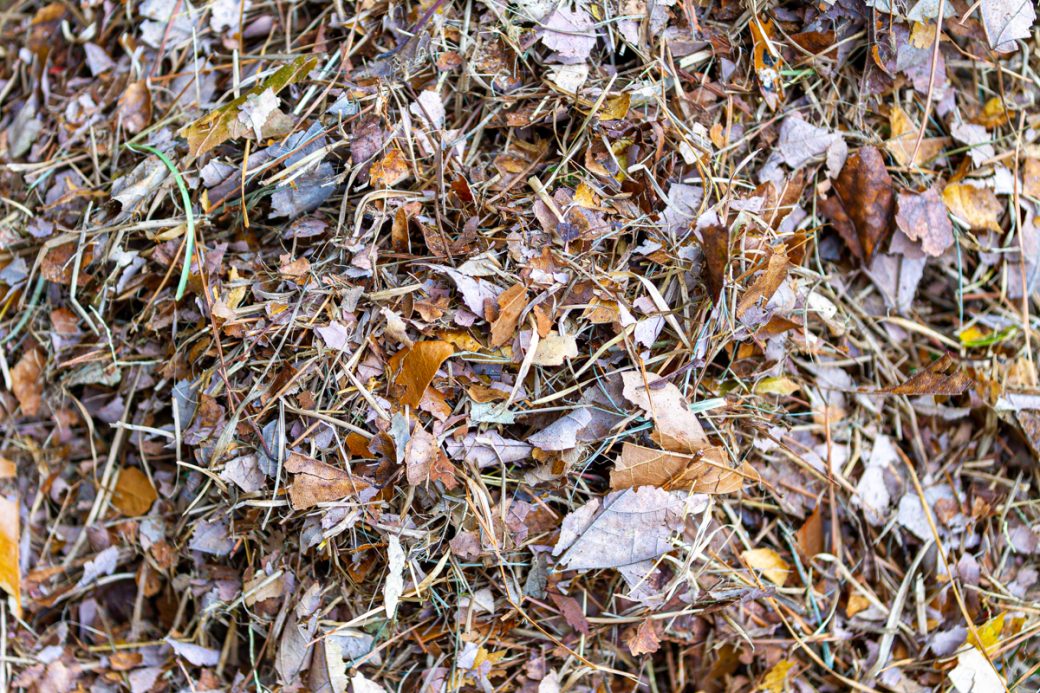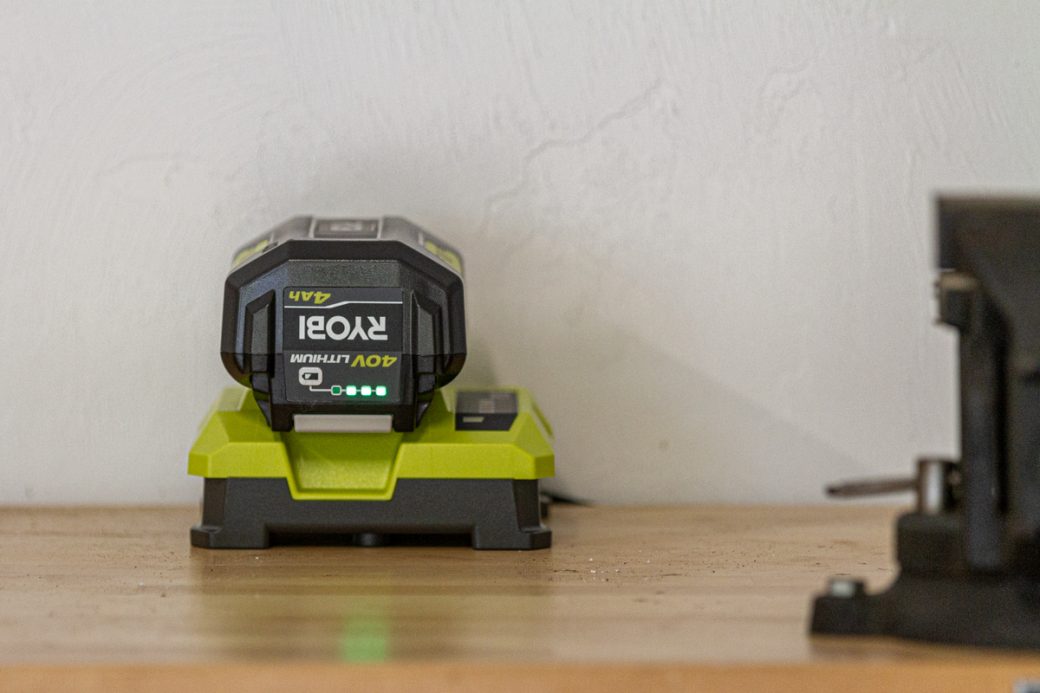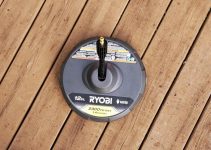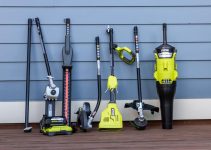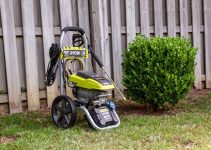Summer is gone and Fall has arrived! ???? Well, unless you’re here in North Florida, where it’s still 100 degrees, icky-sticky from the humidity, and the ground is as dry as a bone. We are slowly starting to see some temperature changes at night and a few leaves just giving up and letting go. And with the vast number of trees in this area, it’s gonna get messy soon.
Lots of us struggle with how to dispose of leaves after we clear them out of our yards. Around here and outside of the city limits, some people just pile them up to compost or burn them in a barrel, which really stinks up the neighborhood. Most of us just bag our leaves up and set them curbside for the garbage collectors to deal with. But there is a better way to both reuse leaves or dispose of them: Turn them into mulch.
A good friend of the GarageSpot crew needed some help clearing out his backyard of the many dry, dead leaves threatening to overtake his pool, so we got our hands on a RYOBI 40V Cordless Leaf Vacuum/Mulcher to make the job easier. Kinda… more on that in a sec.
[amazon fields=”B07RXNRZSL” value=”thumb” image_size=”large” image_alt=”RYOBI 40V Cordless Leaf Vacuum/Mulcher”]
First, if you’re a DIYer/homeowner type that wants to invest in a great line of cordless tools to make life easier, cleaner, and safer, the RYOBI brand is a fantastic place to start. Just about every tool we use both personally or have acquired specifically for review on this website has been great. And while this leaf vac/mulcher is very far from bad (we’re still giving it an average of about four stars), there is room for improvement. Let’s take a closer look.
Table of Contents
Design & Build Quality
See Also: 6 Best Leaf Vacuums with Mulcher and Blower Options
The RYOBI 40V Cordless Leaf Vacuum/Mulcher is built as well as any RYOBI lawn tool. The familiar RYOBI green plastic housing is strong, feels confident in the hands, and doesn’t feel like it’s going to break under normal use. The vacuum inlet tube is also made from strong plastic, and the wheels, too. The wheels, however, could stand to be beefier but they work just fine. The collection bag is OK but, as we’ll talk about more below, it has a few issues that, if addressed, would make this tool easier to use overall.
We won’t go into the unboxing or setup of this tool—it took us all of five minutes to snap everything into place. Instead, we plugged one of our fully-charged 40V 4Ah batteries in and went to work on our backyard full of dry, dead leaves with a mix of very small sticks and twigs.
A Bit Off-Kilter
When you first grab the RYOBI 40V Cordless Leaf Vacuum/Mulcher to use it, you immediately notice its lack of balance. Even with an empty bag, the rear of the tool just sinks. The chunky 40V battery certainly adds weight here but there’s also a bag that, as it fills up, becomes increasingly heavier as you use the tool.

The added weight, however, isn’t really the main issue we have with this mulcher—we’re just talking about leaves here, after all. Our primary issue is with its overall usability, which is a direct result of its somewhat awkward design, centered mostly around the bag.
First, the collection bag is just too big for this machine. There’s a legitimate dilemma here: if the bag were smaller, people would complain about its lack of capacity. But with the bag as large as it is, one of your feet (depending on which “handed” you are) will constantly be kicking, tripping on, or straddling the thing, forcing you to walk unnaturally.
You can see from the operating manual illustration here that RYOBI recommends walking behind the unit. They’re also not making use of the lower grab handle in the drawing which, as you can see in our photos, we did use—it was just natural to grab on to it given the weight of the tool.
Perhaps a backpack or shoulder-harnessed collection bag may be a better solution, although that certainly would not appeal to everyone. Maybe an even better idea would be some kind of large plastic collection tube integrated into the vacuum tube somehow.
The flat plastic skid plate on the bottom of the bag, in conjunction with the tool’s front wheels, does make the mulcher much easier to manage—once you learn how to use it, that is. Everyone who used the tool for the first time during our review process, however, wanted to lift it up at the rear handle, almost subconsciously. And we believe there’s a reason for that: the angle of the inlet tube plays tricks on us.
Mind Games
For obvious reasons, our brains want vacuums to be flat against the ground. In this case, the inlet tube of the RYOBI leaf vac is angled because, otherwise, leaves won’t go into it—there has to be some air and space around the inlet because leaves aren’t [usually] embedded into the ground like dirt is in carpeting. So, holding the tool upwards so that its mouth is flat means nothing really goes into it. And this is where some online reviewers get it wrong when they complain about its lack of suction. Sure, we all want more power, but how you hold this tool absolutely impacts how effective it does its job.
RYOBI’s solution to this (we think) is its adjustable wheels. The idea here is to position the inlet high enough off the ground that leaves can enter and let the wheels and bag skid plate do the work, while you simply push the machine back and forth. That said, when a couple of shorter-than-average-height people tried the mulcher out for the first time during our review, they struggled—even with its adjustable wheels. The primary issue for them was the balance/weight of the rear of the machine, coupled with its long inlet tube and angle.
Of course, tools can’t be all things for all people—we get that. An adjustable-length inlet tube might help here, along with a smaller and/or relocated bag, as noted earlier. There does appear to be a hole in the housing for a shoulder strap, which was not included in our kit, but we’re not sure that would really solve the larger balance issue. Maybe.
Emptying & Unclogging
When it comes to emptying the bag, it should just be a little easier. There’s a velcro flap, two parallel zippers that pretend to be one (e.g., they never seem to move together) and clamps and clips to undo if you want to actually remove the back from the machine. Going back to the idea of an integrated collection tube of sorts, a plastic door or even plastic zipper flap on this bag would be so much easier to deal with.
During our review, we never experience the machine clogging. But if it did, you have to remove the tube to get to the blades where the clog is most likely to be. Of course, you’ll want to remove the battery before fumbling around in there, but removing the tube isn’t as difficult as some online reviews make it seem. There are two simple steps that are even plastered on the side of the tube. Click, turn, done.
Performance & Features
If you’re looking at the RYOBI 40V Cordless Leaf Vacuum/Mulcher thinking that you can vacuum your entire lawn without blowing or raking the leaves into piles first, you’re going to be disappointed. This tool is only a vacuum in as much as it has to somehow get the leaves to the blades in order to grind them into mulch. Even on the tube, it says “leaf mulcher.” And that’s OK. Really. Yardwork is hard.
The challenges with using this (or any so-called “leaf vacuum”) to suck up lots of leaves covering a large lawn are that the battery won’t last long enough, the inlets aren’t wide enough (purposefully, to prevent clogging), and your arms will tire faster than raking or blowing. If you want something to mulch a thin layer of leaves across an entire yard, a mulching lawnmower is probably the better bet (and, lucky for you, RYOBI has those in its 40V line of cordless tools!).
This tool does dry leaf mulching quite well. In fact, it breaks them down 16:1—what would be 16 bags of leaves becomes one, thanks to its metal impeller that chews ’em up and spits ’em out. Well, into its bag.
There are also three speed settings on the handle—low, medium, and high. To preserve battery power during our tests, we left the unit on its Medium setting for almost the entire review process. The higher the setting, the more suction you’ll get and, presumably, the impeller speeds up as well to handle the larger volume of leaves being fed into it.
The on/off trigger is not variable speed nor does it lock into the ‘On’ position. You will have to hold it down to operate the unit. While not a big deal, coupled with the balance/weight issue, it does add another strain to your already strained hand.
You’ll also see in our pics that the machine didn’t really break down smaller leaves or some of the pine straw. But, in our opinion, many of those are already small enough to pass for mulch. We were actually pleased with the end result here.
For rogue leaves around a few trees or along the driveway, this tool could be useful without all the raking and blowing. It’s hard to rake stray leaves, and using a blower usually means we blow them into a flowerbed or the road. This tool will suck up individual leaves and turn them into mulch… and that’s useful, too.
You should not be using this to vacuum or mulch acorns, pinecones, twigs, sticks, or wet leaves. That said, our lawn was not perfect and did have quite a few small sticks from the aging trees overhead. The RYOBI mulcher accepted what it could and left the rest behind… we’re OK with that, given its purpose.
In terms of battery performance, RYOBI states that this tool, with a 4Ah battery, should mulch up to eight 30-gallon bags on a single charge. We didn’t test it to that extent but almost all RYOBI tools we’ve tested or used (both 18V and 40V) have operated within their stated parameters, with few exceptions. Still, a backup battery is always a good idea.
Conclusion
We picked on the collection bag here a bit but, after several hours of use among multiple people in realistic situations, we think it’s fair to say that it’s an issue that could/should be addressed to make this tool more user-friendly and efficient. Those bag issues alone, however, are not reason enough not to buy this mulcher.
Once you get the leaves into a pile, you really don’t have to walk around too much. This tool will do what it’s supposed to do and do it well, even if a bit clunky. And that’s enough for us to say it’s worth it—especially if you’re already invested in RYOBI’s 40V line of lawn and garden tools.
Rating Criteria
Design
Build Quality
Performance
Features
Ease of Use
Value
Overall Rating
This is a good cordless dry leaf mulcher with room to be great. There are some design flaws that make it a little more difficult to use than it should be but once you understand its true purpose (hint: forget the "vacuum" part) it does its job quite well.

